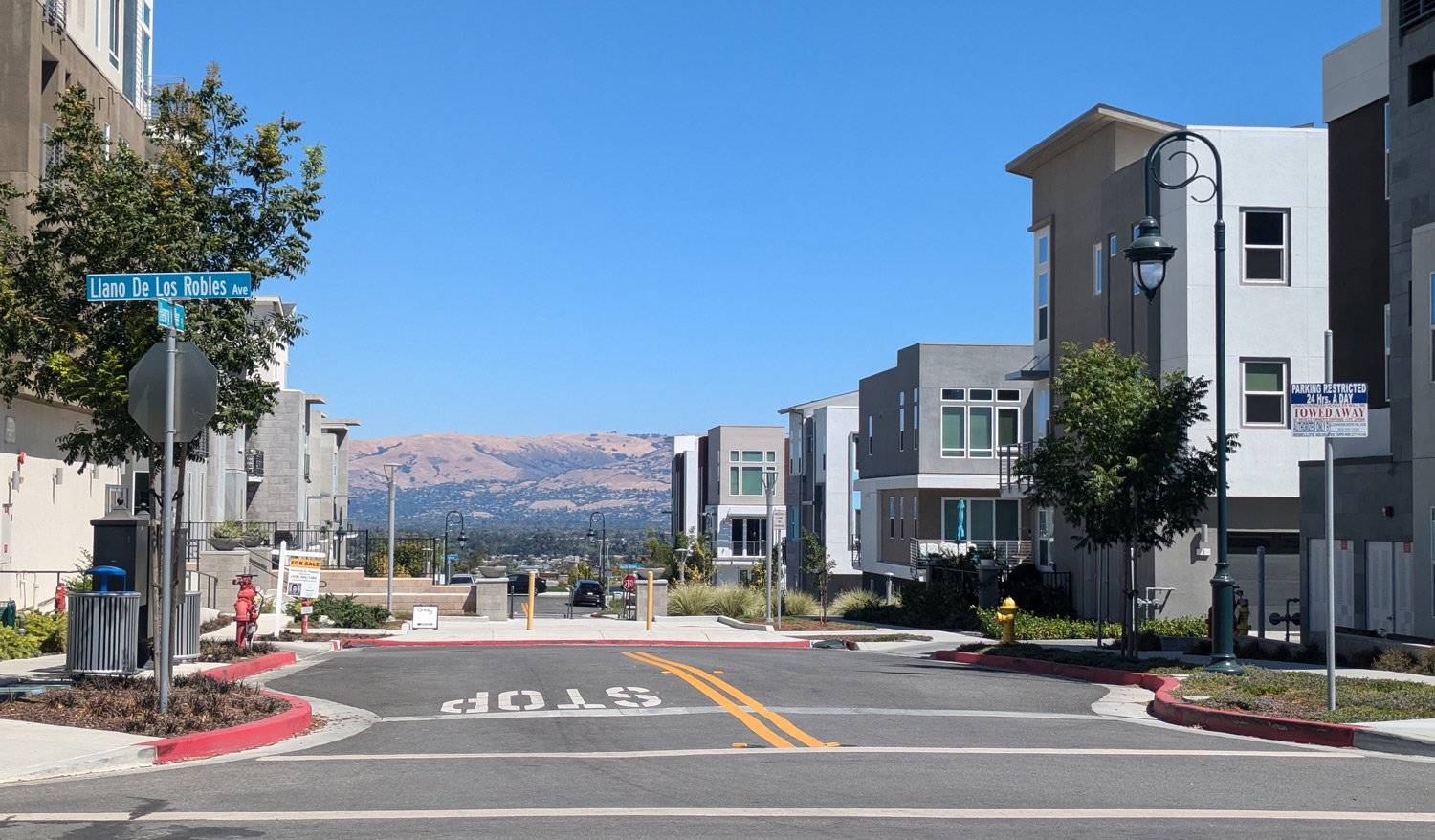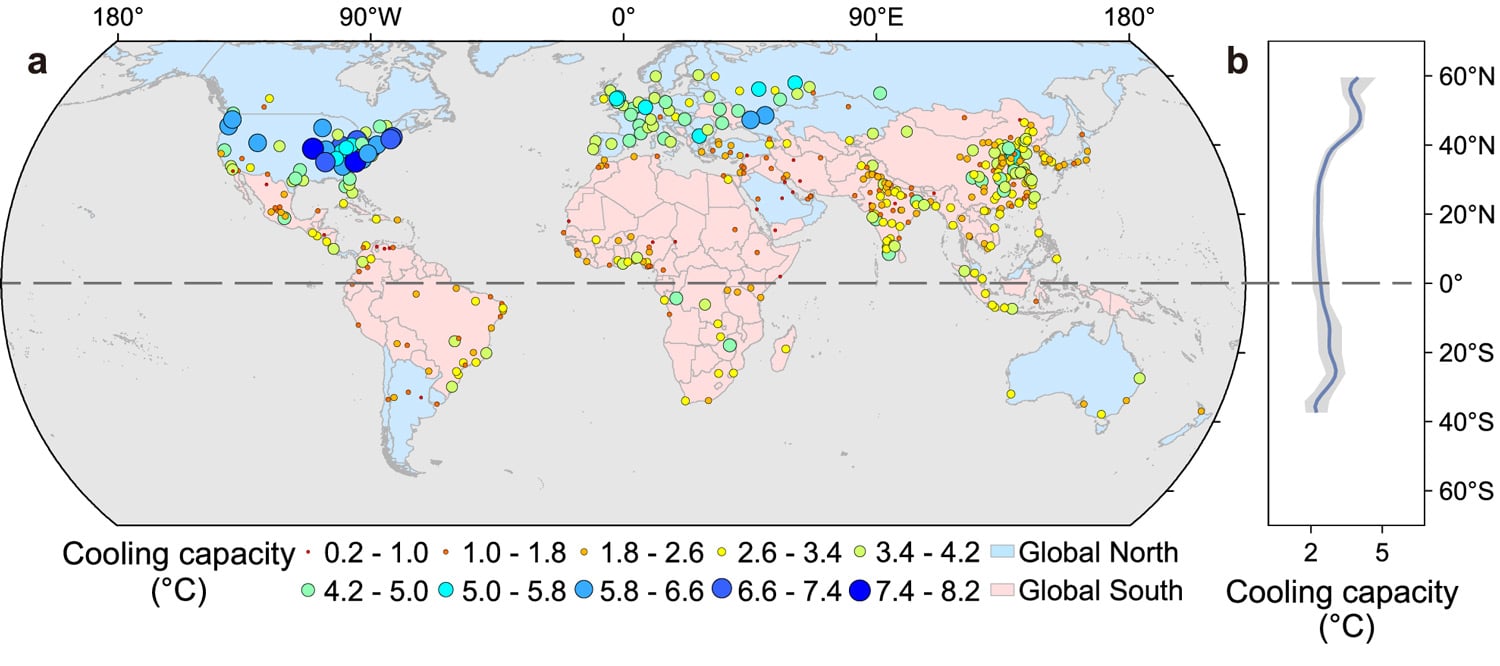Where do urban parks and vegetation benefit residents the most? A recently published study in Nature Communications looked at the cooling benefits of urban vegetation in 468 cities worldwide. The international team of researchers for this study found discovered a global inequality between cities in the Global South and those in the Global North.
What are Global North and Global South countries?
Global North and Global South are terms based on the socioeconomic status of countries. Generally countries North America, Europe, Israel, Japan, South Korea, Australia, and New Zealand are defined by agencies such as the United Nations Trade and Development agency (UNTAD) as being Global North. Most countries in Latin America, South America, Africa, and parts of Asia are defined as being in the Global South. Despite the names, these are not geographic designations tied to the Northern or Southern Hemisphere.
Climate change and the urban heat island effect are impacting cities
Cities face a double threat: the warming caused by climate change itself and the additional heat generated by the urban heat island effect. The urban heat island (UHI) effect is the phenomenon where urban areas experience higher temperatures than surrounding rural areas due to human activities, dense infrastructure, increase absorption of heat from the sun by impermeable surfaces like roads and buildings, and limited vegetation.
The combined effects of climate change and the UHI effect can result in temperatures exceeding 35°C (95°F) with high humidity or 40°C (104°F) with low humidity. These extreme and often persistent temperatures can cause heat stress in humans. Even before reaching these extreme levels, high temperatures can reduce worker productivity and negatively impact overall health and well-being.
Free weekly newsletter
Fill out your e-mail address to receive our newsletter!
By entering your email address you agree to receive our newsletter and agree with our privacy policy.
You may unsubscribe at any time.
The authors of the study noted that cities in the Global South region tend to have overall warmer climates, have fairly dense cities, and a higher population growth rate. These factors put residents in those cities at higher risk of experiencing heat stress.
The role of urban vegetation in reducing heat
Urban green spaces, such as parks and forests, can help reduce heat stress by providing shade and cooling the air through a process known as transpirational cooling. The effectiveness of these green spaces in reducing urban temperatures depends on their size and distribution within a city.

For this study, researchers analyzed the ability of cities to benefit from urban green spaces worldwide to understand global disparities.
Measuring the effect of urban green spaces on temperature with remote sensing
Remote sensing data, including calculations of Normalized Difference Vegetation Index (NDVI) for measuring greenness, was used to measure the cooling efficiency, cooling capacity, and cooling benefits of urban green infrastructure for 468 major cities worldwide. Cooling efficiency refers to how effectively a given area of green space can lower temperatures, while cooling capacity measures the overall cooling impact of a city’s green spaces. Cooling benefit is a measure of how much this cooling actually affects the average city resident.


The study found that cities at lower latitudes experienced less benefit from urban vegetation cooling than cities at higher latitudes. Cities in the Global South have about 70% of the cooling capacity of those in the Global North (2.5°C vs. 3.6°C on average). Similarly, the average person in the Global South cities benefits less from this cooling (2.2°C vs. 3.4°C).
The authors determined that this inequality in cooling is due to differences in the amount and quality of green spaces between the two regions, influenced by economic and environmental factors. Cities in the Global North tend to have more green space and more vegetation within those spaces, especially in affluent areas, that provide a higher cooling benefit.
Reduce global inequalities in urban cooling by optimizing green infrastructure
The authors of this study highlight the potential to reduce global inequalities in urban cooling by optimizing green infrastructure. Cities vary in their capacity to enhance cooling due to cultural, governance, and land-use factors. By systematically increasing the quantity and improving the quality of urban green spaces, cities could significantly boost their cooling capacity, potentially reducing temperatures by up to 10°C in some cases.
The urban cooling study
Li, Y., Svenning, J.-C., Zhou, W., Zhu, K., Abrams, J. F., Lenton, T. M., Ripple, W. J., Yu, Z., Teng, S. N., Dunn, R. R., & Xu, C. (2024). Green spaces provide substantial but unequal urban cooling globally. Nature Communications, 15(1), 7108. DOI: 10.1038/s41467-024-51355-0.
Fonte : National Geographic















